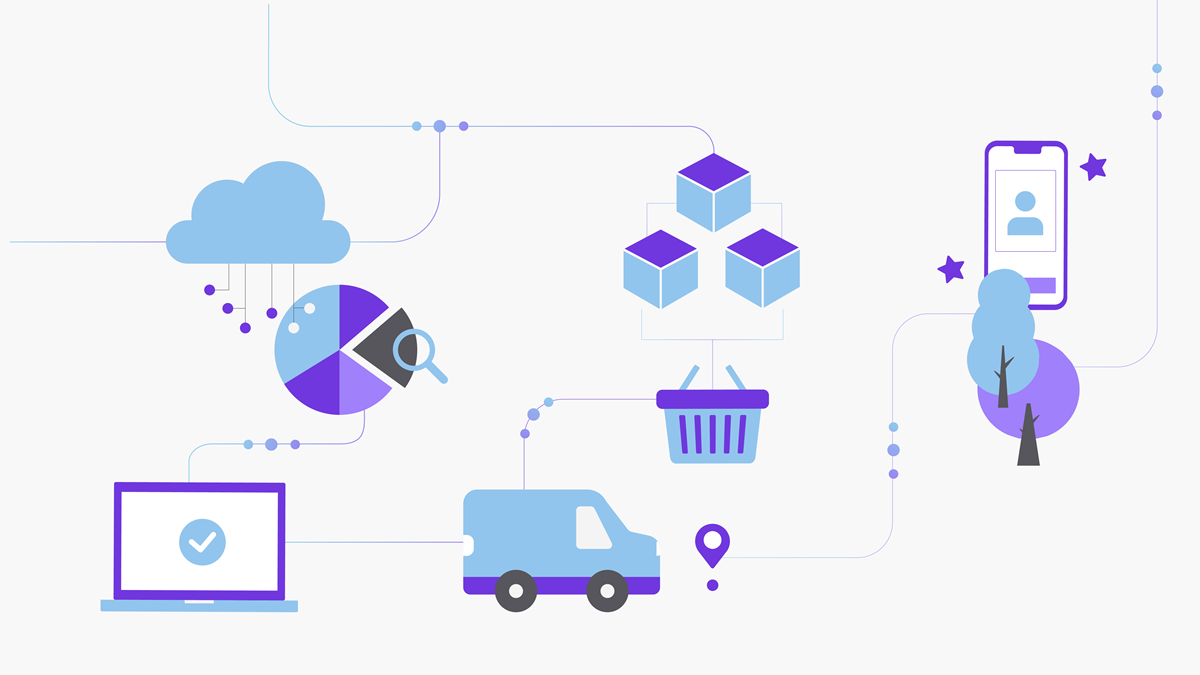Orchestrate a complete end-to-end journey for each customer that adds value at every interaction and drives intent through seamlessly connected experiences in both the physical and digital worlds.
Blend your physical and digital brand identities through:
- In-store analytics – By leveraging advanced technologies such as sensors, cameras, and Wi-Fi tracking, retailers can capture valuable data about customer behavior, traffic patterns, and engagement within the physical store environment. This data can be analyzed to identify areas for improvement, optimize store layouts, and enhance product placement strategies.
In-store analytics also enable retailers to understand customer preferences and tailor their offerings accordingly, leading to personalized recommendations, targeted promotions, and a more relevant product assortment.
By gaining insights into customer behavior and preferences, retailers can optimize staffing levels, improve customer service, and provide a seamless and enjoyable shopping experience. Ultimately, in-store analytics empower retailers to make data-driven decisions that drive sales, boost customer satisfaction, and build long-term loyalty.
- Customer journey orchestration – Predictive analytics play a vital role in helping retailers merge their online and in-store experiences seamlessly. By analyzing vast amounts of customer data from various sources, including online browsing behavior, purchase history, social media interactions, and in-store transactions, retailers can gain valuable insights into customer preferences, trends, and buying patterns.
This information enables them to anticipate customer needs and deliver personalized experiences across all channels. Predictive analytics can help retailers optimize inventory management, ensuring that popular products are available both online and in-store, thus reducing the occurrence of being out of stock or overstocking.
Additionally, by accurately forecasting demand, retailers can offer targeted promotions, personalized recommendations, and tailored marketing campaigns to enhance customer engagement and drive sales. Overall, predictive analytics empowers retailers to provide a unified and exceptional customer experience, bridging the gap between online and in-store shopping.
When referring to commerce platforms, MACH is generally what is used. MACH is an acronym that stands for Microservices-based, API-first, Cloud-native SaaS, and Headless. It’s employed to build flexible and scalable digital experiences. Rather than looking for a single vendor to deliver the business needs on a single platform, organizations can take individual pieces of technology that are valuable to the business to create their ultimate experience.
This enables organizations to deliver personalized and omnichannel experiences to their customers, allowing them to adapt quickly to changes in the industry and customer demands. MACH solutions are the way of the future for digital experience delivery, increasing conversions, improving traffic flow, and better serving customers.
Benefits of MACH include:
- Speed – MACH tools are cloud-native, saving time on infrastructure-related elements. They employ powerful static rendering, which enables lightning-quick delivery, providing a significant uplift in performance.
- Security – Composable technology offers powerful new ways to combat security threats and provide more secure digital experiences for brands and customers alike. In many cases, this significantly reduces security vulnerabilities.
- Flexibility and adaptability – MACH gives you the freedom to make changes without impacting the rest of your tech stack. It allows you to incorporate new, innovative capabilities and features without requiring an investment in rewriting and architecting the codebase.
- Best in class components – Since each component is an independent element of the overall solution, switching from one element to another is as simple as replacing the component. This allows organizations to select the best-in-class for each feature and capability, uniquely tuned to the organization's needs.
It’s a meaningful and memorable experience that fosters genuine connections between customers and brands.
By combining deep customer insight, sector expertise, and divergent technology-inspired thinking, our teams at Kin + Carta help you exceed those expectations by reimagining and rebuilding your customers experiences.
